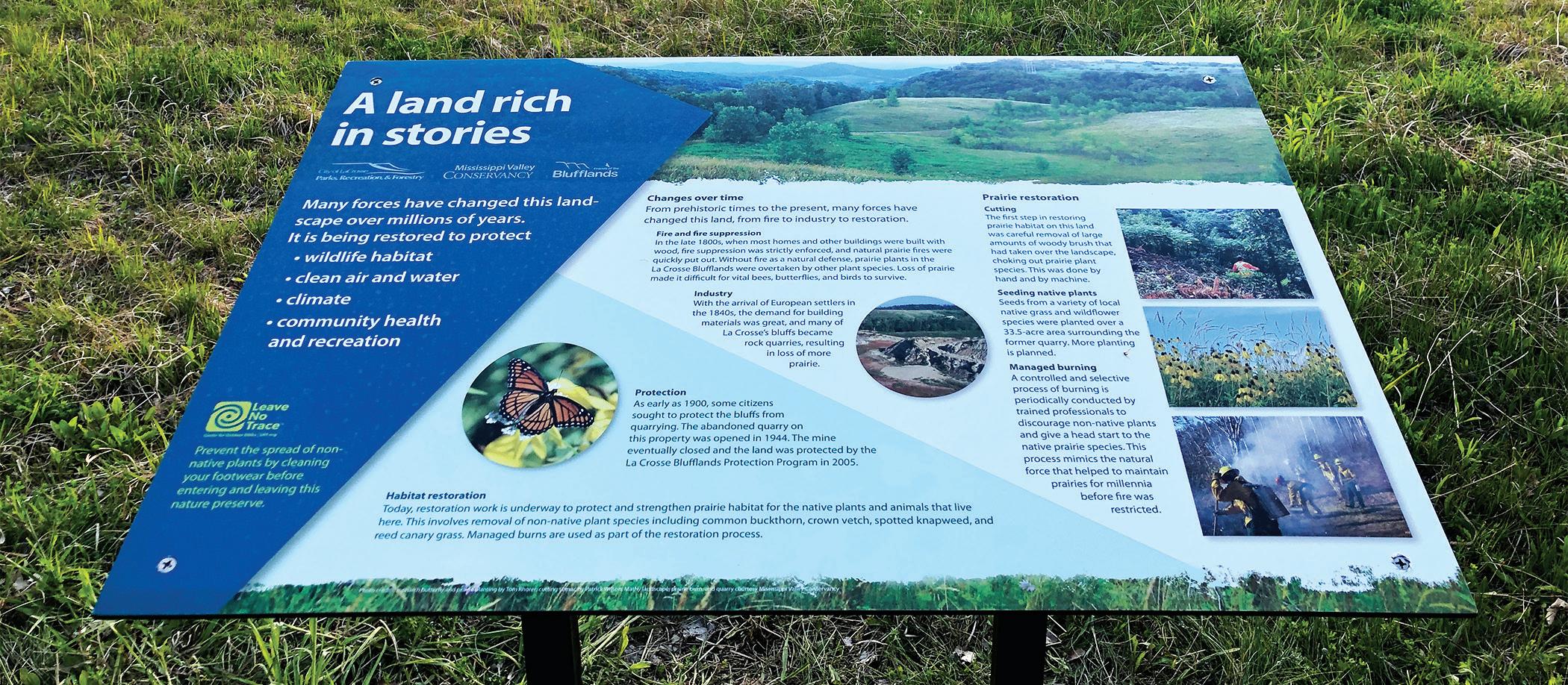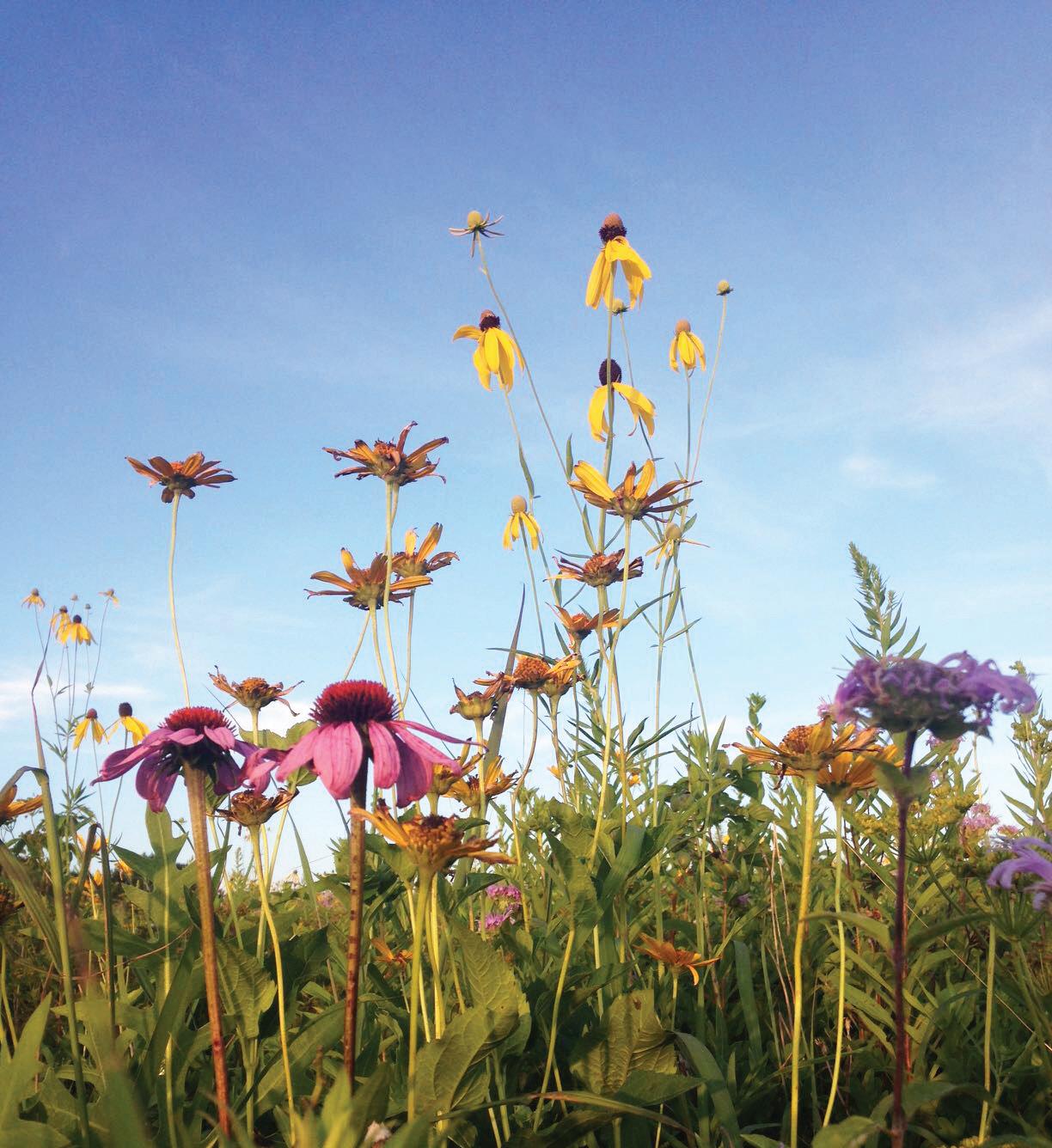
4 minute read
Parks & Environmental
No Mow May encourages pollinator population
By DANI MESSICK | The Municipal
In the city of La Crosse, Wis., grasses and weeds covered an assortment of locations for a solid month this spring. The city had halted its regular ordinance for maintenance to ensure local pollinators could begin to thrive.
“Some of the habitats and food sources are quite limited with urban lawn mowing,” explained Leah Miller, outdoor recreation coordinator for the city of La Crosse Parks Department. Registration for No Mow May began two weeks before May and continued throughout the month.
“We found it important that residents were able to register with us so that we could collect the data source of how many people are participating and also so we could follow up and give them tips, resources and at the end a survey to better understand how effective the program was in our community,” Miller said.
By the end of the first week of May, roughly 1,200 residents were registered for the program, representing approximately 9% of the residential lots in the city. Miller said it’s more than she had anticipated, having looked at the results from a previous program in Appleton, where there were only 400 participants in the first year of the program.
“There’s been some chatter about this program over the last couple years and a lot of people have at least heard about it, which I think is what made me impressed with the numbers,” she said.
The city of La Crosse’s program was modeled after Appleton, which in turn had been modeled after a program from the United Kingdom, according to Miller. ABOVE: City officials offered participants in No Mow May signs to help explain the lawn commotion throughout neighborhoods. (Photo provided by the city of La Crosse, Wis.)
“The primary emphasis of this program, in its infancy stages, was to focus on bees,” she said. “We feel the same way because of the declining population of bees that we’re seeing worldwide, but we also want to call out that this isn’t just only for bees. There are a lot of pollinators out there, and they all serve very important purposes.”
In May, Miller noted that in La Crosse, the year’s spring had been relatively cold with little rain, meaning she expected that grasses would not get as high as they had in other years.
“Pollinators are generally beneficial,” she said. “A lot of what we hear about them is that their main service is to pollinate plants and crops to support our food sources, but they’re also food for other species in the

food chain of life as well. Birds in the backyard feed on grubs and insects as well, and bats feed on mosquitos, so it’s important to continue to provide some of that habitat where you can. I think this is a simple way people can contribute to maintaining habitat for pollinators within their properties.”
This isn’t La Crosse’s first foray into pollinator habitat programming. Aside from the parks department’s collection of pollinator habitats at local bluffs, a program began this year to encourage and teach residents how to turn their boulevard turf into a natural landscape. In that program, residents could replace the grass in the area between the sidewalk and the road with salt-tolerant, low-growing, regional plant life.
“While not mowing your grass is really great for the pollinators in the springtime, there’s other pieces, like planting native plants within their existing garden beds or boulevard area that they could do that would last from spring to fall.”
The city of La Crosse has a noxious weed ordinance that declares that any grass or weed above 8 inches in height subjects the property owner to a violation. For neighbors unaware or concerned about the look of lawns, signs scattered throughout participating yards can help bridge the gap.
“We understand that not mowing for the entire month of May might be kind of difficult for some residents, so we have a couple alternatives that they can do to also participate,” she noted.
The alternatives include reducing the frequency of mowing, mowing only the front yard, raising the mower deck to the highest setting or alternating between front and back yards.
A resolution put forth by city legislators allowed the parks department to suspend the local ordinance through June 14.
“I encourage people throughout the lawn mowing season to generally raise the deck of their mower to a higher setting or reduce the frequency of mowing so that those flowering plants within their yard can continue to provide the flowers for pollinators throughout the season,” said Miller. “Mowing your grass a little bit higher is really great for the root system of the grass as well.” ABOVE: The city also has pollinator habitats in local green places and uses signage to help residents better understand what a good and effective pollinator habitat might look like and the value of them. Pictured is a sign at Mathy Quarry. (Photo provided by the city of La Crosse, Wis.)
Residents of La Crosse, Wis., are participating in a citywide effort to encourage pollinators throughout the city. The city has done its own part, creating pollinator habitats in local parks. (Photo provided by the city of La Crosse, Wis.)











